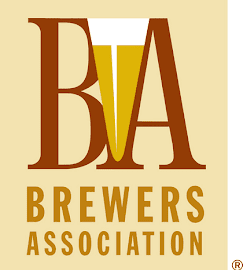101 years ago, today, on 1 November 1916, the Mapp Act became law in Virginia: alcoholic beverages were prohibite and the entire state went dry. For the rest of the country, National Prohibition —under the 18th Amendment to the Constitution— would not take effect until 17 January 1920.
Although Virginia established statewide prohibition through a popular referendum, it nonetheless faced several challenges in enforcing the new law. Its long coastline made it difficult to prevent smuggling, i.e. rum-running. It bordered on a wet state, Maryland, which made barely an effort to enforce national dry laws from 1920-1933. Virginia contained several cities which were reluctantly dry, most notably Alexandria, Richmond, and Norfolk. In addition, Virginia had a long-established moonshining tradition in the mountainous western part of the state. As a result, Virginia struggled to live up to the dry ideal it set for itself in 1916.—Mark Benbow of RustyCans.org, as published in the winter 2010-2011 issue of Brewery History
[...] The referendum on state-wide prohibition [with two simple choices, “For State-Wide Prohibition” and “Against State-Wide Prohibition”] passed, on 2 September 1914 by a vote of 94,251 in favor and 63,886 opposed. Of Virginia’s 100 counties, 71 voted in favor of prohibition. Eight of the ten congressional districts went dry, and one of the remaining two was wet by only ten votes. Surprisingly, sixteen of the state’s twenty cities also voted in favor of going dry. Traditionally cities were strongholds of wet votes. However, only Arlington, Norfolk, Williamsburg, and Richmond stayed wet.Accordingly, following the referendum, the Virginia legislature quickly passed a prohibition law, called the Mapp Law after state Senator Walter Mapp of Accomack County, making the entire state dry as of midnight, the morning of November 1, 1916. [...]The Mapp law defined “ardent spirits” as “alcohol, brandy, whiskey, rum, gin, wine, porter, ale, beer, all malt liquors, absinthe, and all compounds or mixtures of any of them.” The phrase “all malt liquors” was worded to include both intoxicating and non-intoxicating drinks made of malt.
The new dry law closed numerous distillers, six breweries, as well as several hundred saloons, in addition to taking away business from bottling companies and distributors. Breweries and distillers were allowed to stay in business so long as they sold their product out of state. Five of the six Virginia breweries stayed open until 1918. Only Robert Portner’s in Alexandria closed immediately.
[...] Virginia shares the Chesapeake Bay with Maryland, and the bay seemed as if it were designed for smuggling with its many small islands, coves and inlets. Norfolk had been wet during the referendum and remained a popular spot for smugglers to import alcohol. Finally, Virginia had a long-standing tradition of moonshining, especially in the western mountains, an area which traditionally resented Richmond’s control. Moonshiners found that prohibition furnished an even larger market for their product.
Seventeen years later, on 3 October 1933, Virginia voters would vote to end statewide prohibition. A few weeks later, on 25 October, a state convention would ratify the 21st amendment to the U.S. Constitution, repealing Prohibition, making Virginia the 32d state to do so. The amendment would take effect less than two months later, on 5 December. A few months after that, on 7 March 1934, Virginia's Department of Alcoholic Beverage Control would be established.
And so it goes.
-----more-----
- For more from YFGF:
- Follow on Twitter: @Cizauskas.
- Like on Facebook: YoursForGoodFermentables.
- Follow on Flickr: Cizauskas.
- Follow on Instagram: @tcizauskas.




.png)






No comments:
Post a Comment
Comment here ...